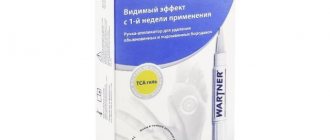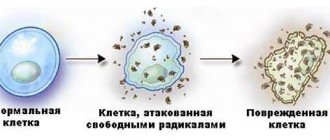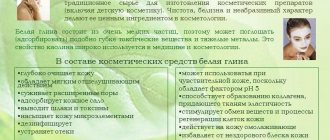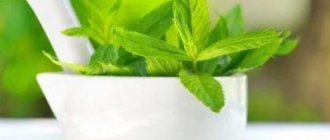Pigmentation is a process of impaired melanin production. It appears in the form of light yellow, yellow, dark brown spots on the skin with uneven edges and different diameters. The problem most often occurs in places that are exposed to ultraviolet radiation. There are many ways to lighten. Kojic acid helps to achieve high results for pigmentation and restore clearness to the skin.
What is it and how does it affect pigmentation?
Kojic acid is a substance obtained from Japanese mushrooms. It is released during metabolism. It has a whitening effect on the skin and is included in many cosmetic products.
It has the appearance of a colorless crystalline powder that disintegrates when exposed to water. This inconspicuous product can affect melanin, stopping its production. Melanin is a natural pigment that gives color to hair, eyes and skin. If there are violations in its production, then unaesthetic stains appear.
What is Kojic Acid?
“The main task of kojic acid is to lighten the skin,” explains Julia. “It inhibits tyrosinase, an enzyme involved in the formation of cells responsible for skin color (melanogenesis).”
Today, kojic acid is obtained from several fungi, including the Penicillium and Aspergillus genus. It was first discussed in Tokyo in 1907: plant physiology professor Kendo Saito isolated the acid as a byproduct of the fermentation of boiled rice by mold. In Japanese, koji translates as “koji mold” - these are molds that are used, for example, in the production of sake.
In what cases should it be used?
Hyperpigmentation can start for a variety of reasons. These may be malfunctions of internal systems and organs or external factors. Skin coloration often changes among intense tanners. The skin takes on a bronze tint, and in some places it is covered with small spots and freckles. If the spots evenly occupy the area and have the same shade, this is a reaction of the dermis to ultraviolet radiation and will soon go away. In the future, you will need reliable protection in the form of a cream with SPF 50 or higher.
If yellow or black unevenly colored changes appear, you should pay attention to the condition of the body. Often the reason lies in the following:
- improper liver function;
- taking antibiotics;
- changes in hormonal balance due to puberty, pregnancy, diseases of the reproductive system or thyroid gland;
- problems with the gastrointestinal tract;
- stress;
- impaired metabolism;
- dermatological diseases;
- senile changes.
Kojic acid is used in all cases of pigmentation, but in cases where the culprit lies within, a comprehensive treatment is required. Exposure to the spot from the outside will not bring the desired whitening effect if the diseased organ continues to produce excess melanin.
Kojic acid for age spots
Kojic acid benefits include lightening visible sun damage, age spots and scars. In addition to its skin-lightening effects, kojic acid also contains some antimicrobial properties. It can help treat inflammatory skin conditions such as acne and pimples. It can also lighten acne scars that have not yet faded.
Kojic acid also has antifungal properties. It may be helpful in treating fungal skin infections such as yeast infections, candidiasis, and ringworm. If soap containing kojic acid is used regularly, it can help prevent both bacterial and fungal infections on the body.
In summer, the skin should not be bleached (it only needs to be protected from the sun), and autumn and winter are the most optimal time for lightening. Reviva Labs offers Dark Spot Serum Lighten & Brighten , which includes kojic acid.
Lighten & Brighten Serum:
- This unique brightening trio formula combines kojic acid, alpha-arbutin and bearberry
- Kojic Acid, Bearberry and Alpha Arbutin Help Lighten Skin Naturally
- Suitable for all skin types
- Reduces pigmentation and age spots, removes hyperpigmentation
- Improves skin tone and gives it radiance.
So, if you are unhappy with your complexion or are concerned about age spots, then start using products with kojic acid and you will quickly start seeing results.
If this article was useful to you and you want to tell your friends about it, click on the buttons. Thank you very much!
Instructions for use
The acid preparation is recommended to be used to combat pigmentation, but as part of cosmetics. These funds are used for a course of 1-2 months. Apply to clean skin 1-2 times a day depending on the concentration. The use of a complex of cosmetics will help enhance the effect. They are in the lines of many brands.
The first results will appear in 4-6 weeks.
Important! When using kojic acid-based cosmetics for day care, protect your face and other parts with sunscreen with a high SPF level. Sunbathing is strictly prohibited!
What products contain kojic acid?
Kojic acid is most often found in combined acid peels and in mesotherapy preparations for the correction of pigmentation. “If we are talking about home remedies, then these are peelings, creams, serums, concentrates, cleansing treatments,” says Yulia and recommends Dermaceutic Mela peel whitening peels in this category. “They work on pigmentation of any nature: hyperpigmentation spots (even in patients with a high phototype), post-inflammatory pigmentation, chloasma, melasma. Among the mesotherapy preparations for skin lightening, Pluryal mesoline SHINE is good.”
Which cosmetics contain kojic acid?
The substance is found in skin cleansers, cream formulations, serums, various masks, and peelings. You can often find a combination with glycolic acid. It is used as one of the components in toothpastes and preparations for the care and treatment of the oral cavity. Effective cosmetics with whitening properties, in addition to kojic acid, contain vitamins C, A, E, licorice in the form of an extract extracted from the root, fruit acids, enzymes and other brightening substances. After opening the package, the composition quickly loses its properties. It is recommended to spend these funds as soon as possible.
The content of kojic acid in cosmetics ranges from 1-4%. The concentration depends on the type of product, its components and purpose.
- lotion – 0.1-1%;
- peeling – up to 4%;
- gel – 0.1-1%;
- anti-acne soap – 0.1-1%;
- tonic – 0.1-1%;
- serum – 0.8-1%;
- whitening cosmetic preparations – 1-4%;
- mask – 1-4%;
- cream – 1-4%.
Some products for active action on the stain must be applied and left for some time. This way the composition can be completely adsorbed and have a brightening effect.
Each koya preparation must contain ultraviolet irradiation filters. This protects the skin from sun exposure, which can make the pigmented area even brighter and provoke the growth of new spots.
Before use, be sure to test for an allergic reaction.
Do not add pure acid to a cream or ointment. Trying to do so may result in increased concentration and may cause irritation and damage to the skin. It is advisable to use ready-made creams and lotions that already contain the required amount of acid to eliminate pigmentation.
What are the precautions?
There are general contraindications that apply to the use of any active external agents: skin diseases in the acute stage, pregnancy and lactation, damaged skin, individual intolerance to the substance.
Kojic acid only has a whitening property, so people with acne may find it useful in removing post-inflammatory pigmentation. As for other skin diseases, before starting the course it is necessary to consult a specialist and take into account that such products often cause contact dermatitis, as well as individual intolerance.
Reviews
- Maryana, 23 years old: “I have had freckles since childhood, my hair is dark and my skin is light, and they are very noticeable on it. I recently purchased an inexpensive Clearwin lightening cream for myself; my skin became lighter in just two weeks. It lays down in an even layer, does not leave greasy marks, does not stain clothes and is well absorbed. It can be applied morning and evening. Its natural composition is absolutely harmless to my skin. I continue to use it, waiting for the desired result – lightening of all freckles.”
- Bogdana, 35 years old: “I was already tired of hiding my age spots on my face, so I started looking for an effective cream to eliminate them forever. And I found one in the form of Idealia PRO from Vichy. I rub it in twice a day and try not to get my face wet when I apply it. It helps me lighten dark areas of my skin and at the same time eliminates acne. I like it because it absorbs well without leaving any excess oil, and for my oily skin this is the most important thing, it already gets dirty quickly, but this product does not clog pores.”
- Svetlana, 30 years old: “I have long been attracted to budget cosmetics, they are ideal for my skin, and I don’t even look at expensive analogues. She also helped me get rid of age spots that I developed relatively recently. The cosmetologist confirmed the correctness of my choice, because my pigmentation is not age-related yet, the spots appeared as a result of excessive sunbathing at sea, but I like to look like a “chocolate”, and I didn’t think about pigmentation. But after this, I will now constantly use sunscreen cosmetics. And if you want an inexpensive but effective remedy for pigmentation, pay attention to Biocon.”
Prevention
To reduce the risk of recurrence of brown spots on the skin and their treatment, you should limit your time in the sun. When staying outdoors, even in winter, use protective equipment with a high degree of sun protection.
If you are taking hormonal medications or antibiotics that increase the likelihood of pigmentation, visit your doctor and discuss changing the prescribed medication.
Select cosmetic products with caution, as they can cause allergic reactions on the skin, provoke irritation and new rashes. Before attending a cosmetic procedure, it is advisable to find out information about the cosmetologist, who should be experienced.
What are the benefits of folic acid for facial skin?
Folic acid - vitamin B9, must be supplied with food daily. Products such as fish, apples, beef liver, spinach, rye flour, cheese, walnuts, milk powder, and rice are rich in it. An adult should consume about 400 mcg. of this vitamin per day. If for some reason it is supplied in insufficient quantities through food, it is recommended to take this substance additionally in the form of a vitamin.
Folic acid for facial skin helps women solve many cosmetic problems, namely:
- Removes toxic substances.
- Improves metabolism.
- Has anti-inflammatory, antibacterial and antiseptic effects.
- Protects the skin from harmful environmental factors.
- Takes part in cell division.
- Normalizes sebum secretion.
- Activates blood circulation.
- Stops inflammation.
- Has whitening properties.
Vitamin B9 fights free radicals and removes toxins. As a result, the skin is cleansed, looks refreshed, and is better supplied with nutrients. Acid accelerates cell division, smoothes wrinkles, eliminates dryness and sagging.
When is it recommended to use folic acid on the face?
It is used in cases where there is:
- Pimples, rashes.
- Excessive sebum production.
- Inflammatory process.
- Pigmentation.
- Dry, flaky dermis.
Rules for using folic acid for the face at home
- Vitamin tablets are used in beauty salons. At home, it is best to use masks with products containing folic acid, or buy ready-made cosmetics with it.
- Before starting the procedure, it is necessary to remove makeup and cleanse the skin of contamination.
- Masks are applied up to two times a week.
- Before using a cosmetic product, you must do a test to confirm that you do not have an allergic reaction to it. Apply a little mixture to the bend of your elbow and wait 15 minutes. If there is no redness, then it can be used.
- The composition is removed with running water.
What is useful to know for those who suffer from hyperpigmentation?
Hyperpigmentation is a problem for many men and women, especially during the spring and summer. What causes this, and how to prevent the appearance of age spots?
Content:
1. Causes of hyperpigmentation 2. How to prevent the appearance of age spots? 3. How to get rid of age spots?
Causes of hyperpigmentation
Hyperpigmentation¹ occurs when the body produces too much melanin, causing certain areas of the skin to darken.
This can be caused by a variety of reasons:
- exposure to sunlight;
- damage to the skin;
- hormonal imbalance;
- folic acid deficiency;
- exposure to active oxygen.
Let's take a closer look...
Exposure to sunlight
Typically, excess melanin production is triggered by sunlight. Age spots, freckles, age spots and sunburn are all examples of hyperpigmentation, which is caused by the harmful effects of ultraviolet rays.
Damage to the skin
Darkening of the skin can occur after various injuries to the skin, such as injuries, inflammatory rashes, infections, burns, allergic reactions or acne².
Hormonal imbalance
Hyperpigmentation can also be caused by hormonal imbalance. Often, hormonal contraception causes changes in estrogen or progesterone levels. By stopping the use of birth control pills and removing the intrauterine device, many women were able to quickly return their skin to its natural appearance.
Often, increased pigmentation can be associated with low levels of thyroid hormone. To accurately determine the cause and select the appropriate treatment, it is recommended to consult your doctor.
Folic acid deficiency
Numerous studies have confirmed that skin hyperpigmentation is often associated with folic acid deficiency, so people suffering from age spots are advised to eat foods and take dietary supplements that are high in folic acid, such as green leafy vegetables, citrus fruits, beans and whole grains.
Exposure to active oxygen
Under the influence of active oxygen, skin cells are oxidized, which also leads to increased pigmentation. Vitamin C has proven itself well in this aspect. Daily intake of 500 mg of vitamin C saturates the body with antioxidants and makes the skin color even and beautiful.
How to prevent the appearance of age spots?
Those who suffer from hyperpigmentation and for whom body beauty is important should, first of all, think about protecting their skin from exposure to sunlight.
Sunscreen should be included in your daily comprehensive skin care routine. It is worth choosing a broad-spectrum sunscreen (SPF 30 or higher) and applying it daily half an hour before going outside.
If your skin is naturally prone to excessive pigmentation, then sunscreen must be used, otherwise all skin whitening procedures will be a waste of time, since sunlight will again activate melanin production.
Note!
Sunscreen should be applied to a previously cleansed face and body treated with serum or lotion.
You also need to remember that sunscreen must be used daily, even if age spots have already disappeared. This is the only way to maintain a beautiful skin tone.
When choosing sunscreens, you should pay attention to their properties - what skin type they are suitable for, and whether they can be applied under makeup.
You need to protect your skin from the sun at any time of the year!
It is recommended to apply protective cream to the skin, even if you do not plan to go outside.
Remember that even one day without sun protection can ruin all your efforts.
Notes and feature articles for deeper understanding of the material
¹ Hyperpigmentation - increased pigmentation of the skin or mucous membranes (Big Medical Dictionary).
² Acne or acne is an inflammatory skin disease caused by changes in the pilosebaceous structures (consisting of the hair follicle and the sebaceous gland) (Wikipedia).
Categories : Body Beauty
Tags : skin problems











